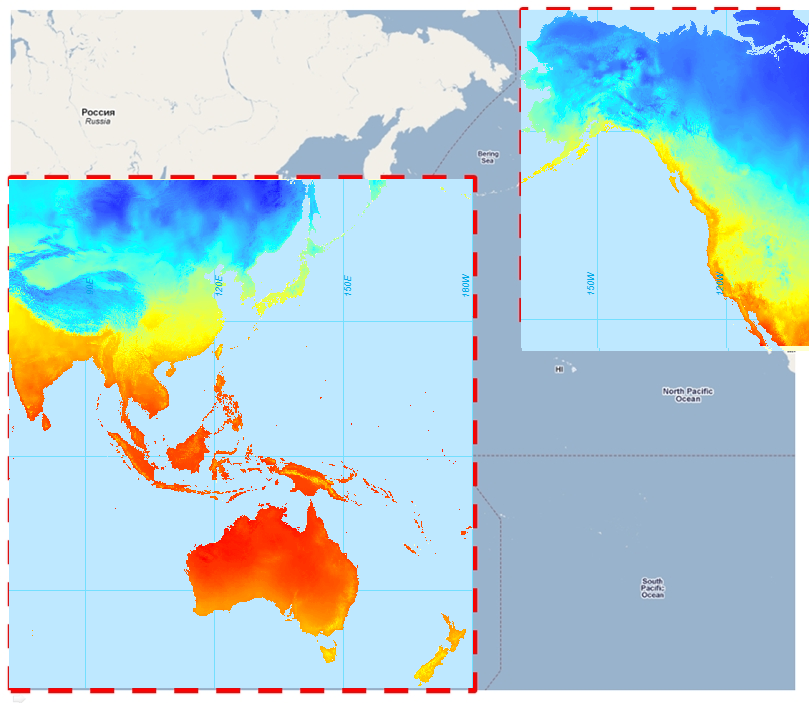Adaptation of Asia-Pacific Forests to Climate Change
Climate change is one of the most important threats to the capacity of forest landscapes to provide ecological, economic and social services in the Asia-Pacific region. Meanwhile, the potential of forests to mitigate climate change represents a major opportunity for the forest sector, as forest ecosystems can either serve as a carbon sink or carbon source depending on their level of health and their resilience to climate change. There is remarkably little evidence that science-based decision-making processes are being incorporated into forest management practices in the Asia-Pacific region. As a result, considerable uncertainty exists over management policies aimed at enabling forests and forest-dependent communities to adapt to climate change. The goal of this project is to address this uncertainty and help forest managers and policy makers to develop effective management strategies to maintain resilient forest ecosystems for adaptation to climate change.
Phase 1 of the project was implemented from November 1, 2011 to October 31, 2014. All research and associated activities have been completed and some have exceeded the original objectives, including the publishing or submission of 28 papers in scientific peer-reviewed journals. Phase 2 of the project is currently in progress, with an expected completion date of December 31, 2017.
Phase 1
The first phase of the project has provided scientifically credible decision-support tools built from climate/ecosystem models to help local forest managers understand the potential long-term costs and benefits of management choices on forest health and ecosystem services. The experience gained from working with local partners to calibrate and help facilitate the transfer of technologies has laid an effective foundation for the expanded application of these decision-supporting tools into specific regions including tropical regions in Southeast Asia. The six outcomes of this phase are as follows:
Output 1: Science and policy reviewMain Objective: Analyze the current status of climate change studies in forest ecosystems and forest-dependent communities and determine whether existing policies could lead to practices that limit climate change impacts in the Asia Pacific region. |
↓
Output 2: ClimateAPMain Objective: Develop a high-resolution climate model for the Asia Pacific region. |
↓
Output 3: Ecological modelsMain Objective: Develop ecological models to predict impacts of climate change on major tree species distributions. |
↓
Output 4: Application and integration of ecological modelsMain Objective: Apply niche-based and process-based models to pilot sites to develop recommendations for sustainable forest management practices. |
↓
Output 5: Network buildingMain Objective: Build a network that connects scientists, forest managers and policy makers in the region to facilitate information sharing and knowledge transfer. |
↔ |
Output 6: Web-based toolsMain Objective: Develop web-based tools to facilitate data access and spatial visualization to promote information flow and knowledge transfer from scientists to policy makers to stakeholders |
Phase 2
The second phase of the project aims to expand and improve upon the research and tools developed in the first phase. It aims to apply these tools to a broader range of ecosystems and associated communities, particularly in China and Southeast Asia where afforestation is active and/or forest ecosystems and dependent human communities are particularly vulnerable to climate change. The output of this phase will improve the capacity of local and regional forest managers to develop robust adaptation strategies to address climate change issues in the Asia-Pacific region.
Specific outcomes are as follows: (1) Addition of future annual climate projections to ClimateAP, as well as addition of new features to facilitate modeling of variability and extreme climatic conditions. (2) Expansion of ecological models to include more key forest species and entire ecosystems in selected economies. (3) Development of indicators through the integration of ecological models to conduct trade-off analysis at representative pilot areas in Southeast Asia. (4) Improvement of the the Google Maps based web tool to include economy-specific maps for better spatial visualization and data access across economies. (5) Continued extension of the network built throughout phase one through workshops, communications and extension notes.
If you are interested in being part of phase 2 or using any of our models, please feel free to contact Guangyu Wang.


